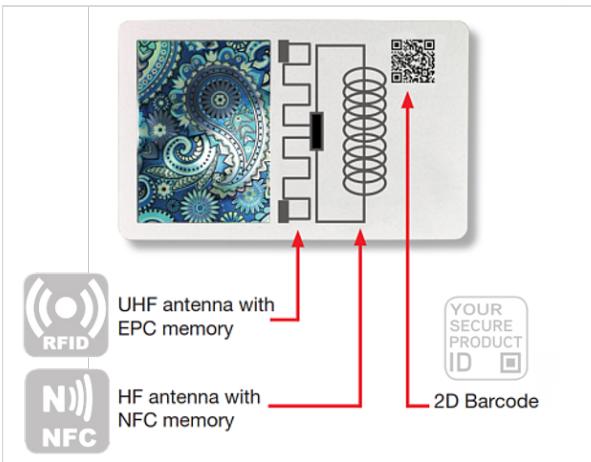2.2 Supply Chain Security Solutions to address the risk scenarios
2.2.4 DNA ID, mass balance products’ flow reconciliation and satellite integration Technology submission 4 One of the submissions received incorporates several security layers for the creation of the digital identity of the product and for controlling its movements along the supply chain. The overall process can be divided in different stages: Creating a unique identity for the product using its biometry and biography and initiating physical traceability, Transferring the identity into a secure database creating the digital one and initiating digital traceability, Monitoring the life of the product along the supply chain and Providing data analytics. The starting point of this technology is that, to secure the supply chain, it is necessary to link the physical journey of a product to the digital to guarantee integrity and auditability and to fight against fraud or diversion. This submission proposes initiating physical traceability by recording the biometry and biography of the product in different forms. In the case of products, and especially for food, the initial identification of the raw materials is essential, as it captures and records the fundamental characteristics of the products. This includes the true DNA of the product (genomics through polymerase chain reaction (PCR), as well as the “environmental DNA” (the conditions in which the product is grown) of the goods. This element provides a unique and innovative way to establish the product’s identity at its very first point of authentication. This first “DNA” capture identifies and contains the biometrics of the products and is further enriched with secure marking (active or passive) of the packaging. This marking also includes the biography of the product, which provides the product description and credentials, including for instance its ingredients. The information allows for the creation and management of “physical reference” databases, which are integral parts of this proposed solution. These databases are used to secure the aforementioned complex identity. The data (transaction and process data) is then inserted into an immutable digital storage. This is a crucial step since the biometrical information of the product then has to be connected to a platform of integrity that will enable tracking through the supply chain. At this step, the physical identification is connected to the digital one. Checks along the supply chain can be randomly performed to verify that the chemical composition of the product matches the recorded biography of the product. One of the tools that can be used for this purpose is a Portable Authentication Device (PAD) encompassing a Fourier Transform Near-Infrared (FT-NIR) spectrometer produced by the company itself. Spectrometers are used to identify and characterize chemicals and compounds in a test sample. These devices are based on the characteristic absorption spectra determined by the chemical bonds in organic materials, which can be used to identify organic compounds, the same method fingerprints are used for identification. FT-NIR provides a useful complement to or replacement of screening methods before the laborious chemistry tests and chromatographic methods. FT-NIR is non-destructive, needs little or no sample preparation as well as being fast, safe and dependable, as it doesn’t need dangerous chemicals. The PAD SICPA FT-NIR spectrometer can be used to detect on site at import points or at points of sale of the non-conformal food products. The PAD in its present form cannot determine whether the deviation from the genuine signature is due to counterfeiting, adulteration, or a quality related problem. However, coupled with the rest of the technology included in this submission, it complements the proposed approach. This gives field inspectors a useful screening tool to rapidly check if the biography information included in the identification and traceability code matches the detected spectral signature without the need to perform a lab test. To begin the digital traceability, the initial biography is linked to the biometry and stored in an immutable manner using blockchain technology to achieve a controlled monitoring of the processes in the supply chain, through the use of the platform of integrity. Product packages will be marked using information on
42











